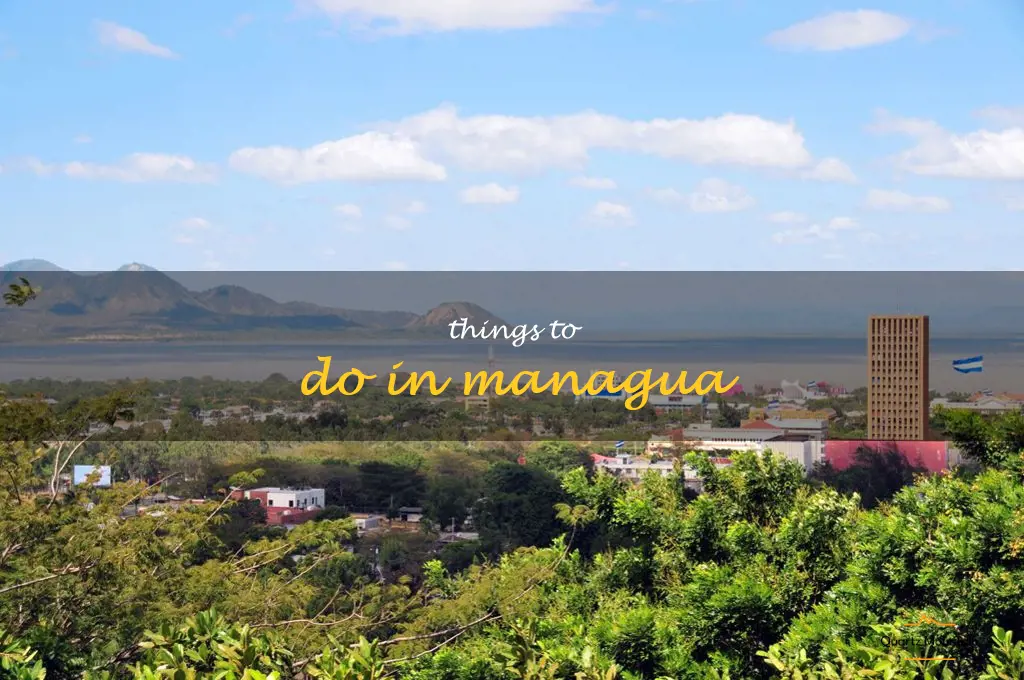
Managua, the capital city of Nicaragua, may not be the first place that comes to mind when planning a vacation. However, with its rich history, vibrant culture, and stunning natural beauty, it's a destination worth considering. If you're looking for unique and exciting activities to do while visiting Managua, look no further. From exploring ancient ruins to sampling delicious Nicaraguan cuisine, here are twelve must-try experiences to add to your itinerary. So get ready to discover the wonders of Managua, and prepare to be amazed.
| Characteristic | Tips |
|---|---|
| Weather | Managua has a tropical climate, with temperatures ranging from 70°F to 90°F throughout the year. Visitors should pack light clothing, sunscreen, and mosquito repellent. |
| Language | Spanish is the official language of Nicaragua, so it helps to know some basic Spanish phrases to communicate with the locals. |
| Currency | The currency used in Nicaragua is the Nicaraguan cordoba. It is advisable to carry small denominations of currency to pay for transportation and small purchases. |
| Safety | While Managua is generally safe, visitors should take precautions and avoid walking alone at night, carrying large amounts of cash, and displaying expensive jewelry. |
| Transportation | Taxis and buses are the most common modes of transportation in Managua. Visitors should negotiate taxi fares before getting in and be prepared for crowded buses. |
| Top attractions | Some popular things to do in Managua include visiting the National Palace, exploring the historic district of Viejo Managua, and admiring the views from the top of the Tiscapa Lagoon Natural Reserve. It is also worth taking a day trip to Masaya Volcano National Park or Granada. |
What You'll Learn

Masaya Market
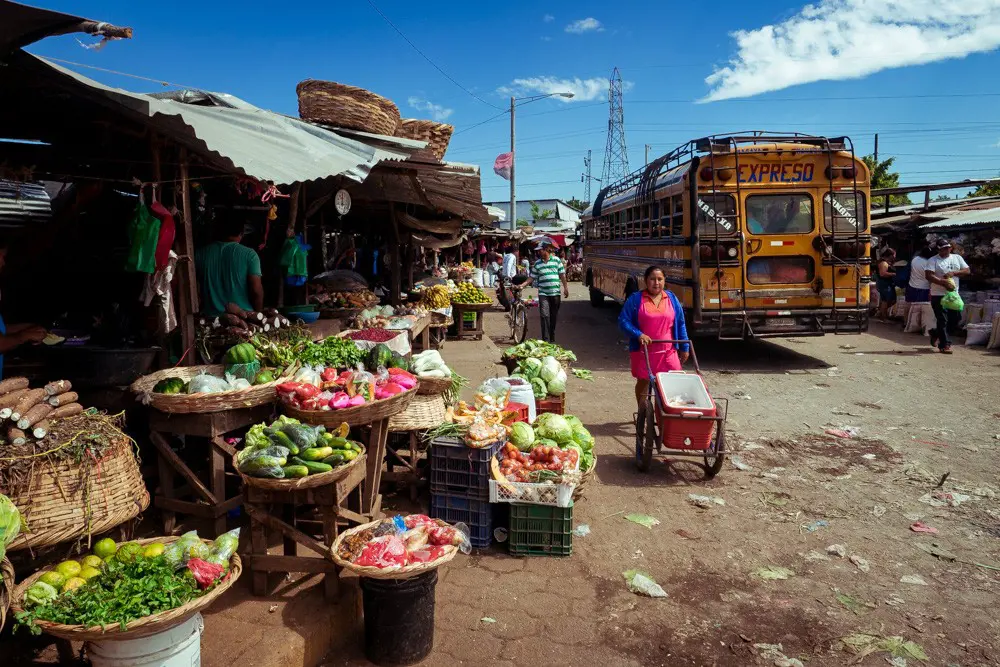
Visiting the Masaya Market is a unique and exciting experience full of color, smells, and sounds. The market is spread across several blocks with more than 500 stalls selling everything from souvenirs, paintings, jewelry, clothes, pottery, and leather goods to fresh fruit, vegetables, and meat. It can be overwhelming to navigate through all of the stalls, but it is a great opportunity to haggle with the vendors and practice your Spanish.
One of the best things to do in the Masaya Market is to sample the local cuisine. You can find traditional Nicaraguan dishes such as nacatamales, which are made from masa, meat, and vegetables wrapped in banana leaves, or vigorón, a dish made with yucca, pork rinds, and salad. There are also many food stalls selling freshly made tortillas, empanadas, and ceviche.
To make the most of your visit, it is advisable to arrive early to avoid the crowds and heat. The market is open every day except Monday but is busiest on weekends. Be prepared to walk a lot and wear comfortable shoes as the streets are uneven and crowded. Also, it is a good idea to bring small bills and coins as many vendors may not have change for larger bills.
Storytelling is an important part of the market's culture. Many vendors are passionate about their craft and are happy to tell their stories and the history of the product they are selling. You can learn about the traditional techniques that are used to create the handmade crafts and the significance of the symbols and designs that adorn them.
The Masaya Market has a fascinating history. It was built in the early 20th century and became an important center for local artisans. During the Sandinista Revolution, the market was bombed several times, but the locals rebuilt it each time. Today, it stands as a testament to the resilience and determination of the Nicaraguan people.
A visit to the Masaya Market is not complete without a trip to the nearby Masaya Volcano National Park. The park is home to one of the most active volcanoes in Central America, and you can take a guided tour to see the lava lake from a safe distance. The park also has hiking trails, bird watching, and a visitor center with exhibits that explain the geology and history of the area.
In conclusion, the Masaya Market is a unique and vibrant destination that offers visitors a glimpse into the local culture and traditions. From the colorful handicrafts to the delicious food and the friendly vendors, it is an unforgettable experience. Whether you are shopping for souvenirs or just soaking in the atmosphere, the Masaya Market is a must-visit attraction in Nicaragua.
14 Fun Things to Do in Eden, Utah
You may want to see also

National Palace of Culture
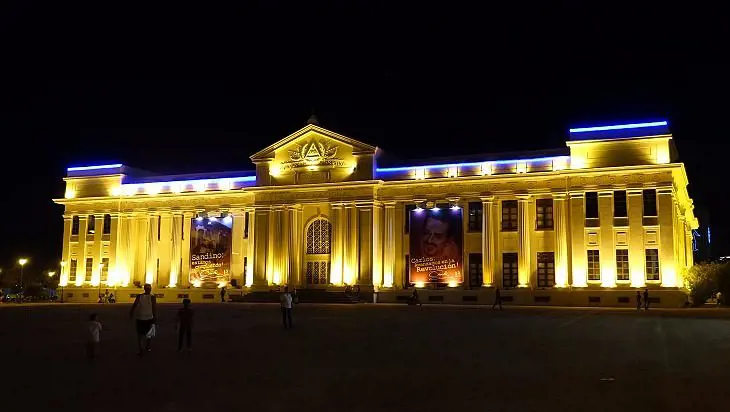
| Characteristic | Description |
|---|---|
| Name | Palacio Nacional |
| Type | Museum in Managua, Nicaragua |
| Website | Go to website |
| Rating / Review count | 4.6 / 283 |
| Address | Palacio Nacional, 4 Calle Noreste, Managua 11001, Nicaragua |
| Phone | +505 2222 4102 |
| Hours | Sunday - 8 AM–5 PM Monday - 8 AM–5 PM Tuesday - 8 AM–5 PM Wednesday - 8 AM–5 PM Thursday - 8 AM–5 PM Friday - 8 AM–5 PM Saturday - 8 AM–5 PM |
The National Palace of Culture of Managua is a must-visit destination for anyone traveling to Nicaragua. It is one of the most iconic landmarks of the country and boasts a rich cultural history that is worth exploring. Located in the heart of Managua, the National Palace of Culture is an impressive building that stands out among the other government buildings in the area.
Built in 1935, the structure has undergone several renovations and now serves as a cultural center and museum. The building is open to the public and visitors can explore the many rooms and exhibits that depict the history of the country. The architecture of the building is stunning and showcases a blend of Spanish and Indigenous influences.
One of the main attractions of the National Palace of Culture is the ornate murals in the interior. The murals depict Nicaraguan history and revolution, including the Sandinista revolution of the 1970s. Visitors can take a guided tour to learn more about the significance of each mural and the stories behind them.
Another highlight of the National Palace of Culture is the rooftop terrace that offers stunning views of the city. The terrace also hosts a restaurant where visitors can enjoy traditional Nicaraguan cuisine while taking in the beautiful vista.
If you are planning to visit the National Palace of culture, it is best to go early in the day to avoid the crowds. The museum is open from 9 am to 5 pm every day except Mondays. Admission is affordable and well worth the experience.
One thing to keep in mind is that you are not allowed to take photos of the murals inside the building. However, there are plenty of opportunities to take photos of the stunning architecture and views from the rooftop terrace.
Overall, the National Palace of Culture of Managua is a must-visit destination for anyone interested in Nicaraguan culture and history. Whether you are a history buff or simply looking for a unique cultural experience, this landmark is sure to leave a lasting impression on you.
In the words of Pablo Antonia Cuadra, a Nicaraguan poet, “The National Palace of Culture of Managua is a symbol of the nation’s culture, history, and identity. It is a testament to the resilience and strength of the Nicaraguan people and their commitment to preserving their heritage.”
14 Fun and Unique Things to Do in Oakbrook
You may want to see also

Tiscapa Lagoon Natural Reserve
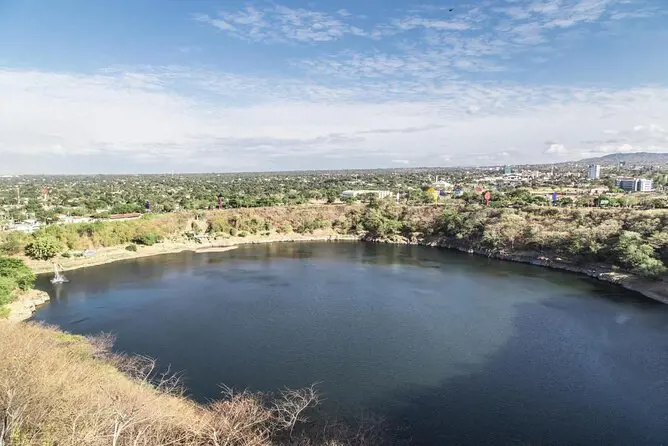
| Characteristic | Description |
|---|---|
| Name | Tiscapa Lagoon Natural Reserve (Reserva Natural Laguna de Tiscapa) |
| Type | Protected area in Managua, Nicaragua |
| Website | Go to website |
| Rating / Review count | 4.5 / 797 |
| Address | 101 8 Calle Suroeste, Managua 11118, Nicaragua |
| Phone | +505 2265 0635 |
| Hours | Sunday - 8 AM–8 PM Monday - 10 AM–8 PM Tuesday - 7 AM–8 PM Wednesday - 8 AM–8 PM Thursday - 5 AM–8 PM Friday - 8 AM–8 PM Saturday - 7 AM–8 PM |
One of the highlights of visiting the Tiscapa Lagoon Natural Reserve is taking a ride on the cable car. It's a unique experience that allows visitors to see the reserve from a different perspective. The cable car takes you across the lagoon and up to the top of the crater, where you can take in panoramic views of Managua. The ride is a bit scary but thrilling, and it's the perfect opportunity to take some great photos of the city.
For those who prefer to explore on foot, there are several hiking trails in the reserve that cater to different levels of difficulty. One of the most popular trails is the Mirador trail, which takes you up to a lookout point that offers breathtaking views of the lagoon and the surrounding hills. The trail is well-marked and easy to follow, making it accessible to hikers of all ages and fitness levels.
Another must-see attraction in the reserve is the Monumento a Sandino, a statue of Augusto C. Sandino, who was a famous Nicaraguan revolutionary. The monument is located at the top of the Tiscapa Lagoon crater and can be reached by cable car or by hiking up the Mirador trail. The monument is a symbol of Nicaragua's struggle for independence and is an important piece of the country's history.
Visiting the Tiscapa Lagoon Natural Reserve is best done in the early morning or late afternoon when the weather is cooler. It's also less crowded during these times, allowing visitors to enjoy the peace and serenity of the reserve without too much interference from other tourists. The reserve is open every day from 8 am to 5 pm, and tickets for the cable car ride can be purchased on-site.
If you're planning a trip to Managua, Tiscapa Lagoon Natural Reserve should definitely be on your list of places to visit. It's a beautiful and tranquil spot that provides a welcome respite from the hustle and bustle of city life. Whether you prefer hiking or cable car rides, there's something for everyone to enjoy in this hidden gem of Nicaragua. So pack your bags and head on over to Tiscapa Lagoon Natural Reserve for an unforgettable experience!
14 Fun and Exciting Things to Do in Red Hook, NY
You may want to see also

Chocoyero-El Brujo Nature Reserve
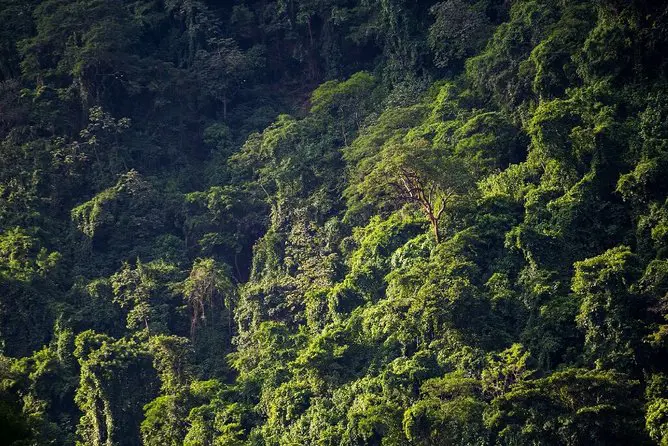
| Characteristic | Description |
|---|---|
| Name | Reserva Natural El Chocoyero y El Brujo |
| Type | Nature preserve in Nicaragua |
| Website | Go to website |
| Rating / Review count | 4.5 / 180 |
| Address | De la vuelta de Telcor, 75 mts al este, Nicaragua |
| Phone | +505 2276 7810 |
The reserve is home to more than 118 bird species, including the endangered Green Macaw, which is the reserve's most popular avian resident. Visitors can hike through the reserve's two primary trails to observe the distinctive flora, with the emphasis on Ceiba, Guanacaste, and Pochote trees, which tower over the surrounding landscape. One of the reserve's most sought-after features is the Chocoyero waterfall, which stands at an impressive height of 35 meters and provides visitors with a refreshing dip in its cool waters.
The best time to visit the reserve is between November and February, so it’s perfect for a winter getaway. The weather conditions are generally humid, but the temperature is pleasant, making it ideal for leisurely hikes through the nature reserve. Tour guides are available to accompany visitors through the reserve on request, and they are well equipped to show visitors the best wildlife sighting spots.
Visitors staying in the nearby city of Managua can arrange transportation to the reserve through tour operators or by public transportation. The trip can take up to 6 hours by car from Costa Rica or Honduras, but it's worth it when you consider the beauty and diversity of the reserve.
It's essential to be well-prepared for a visit to Chocoyero-El Brujo Nature Reserve. Visitors should wear comfortable, sturdy shoes for hiking and dress appropriately for the weather. It would be best to pack sunscreen, insect repellent, and a hat, as well as enough water and food to last the day. It's best to avoid carrying valuables with you while hiking in the reserve as robberies sometimes do happen.
In addition to exploring the natural wonders of the reserve, visitors can also partake in other activities, like visiting nearby communities that are home to artisans, getting to know their traditions and culture. Visitors can watch the locals make ceramics and paintings, and enjoy traditional meals, including nacatamales and other regional dishes.
In conclusion, Chocoyero-El Brujo Nature Reserve is a nature lover's paradise that offers a unique experience of Nicaragua's wilderness. It's an excellent spot to immerse yourself in nature, observe the diverse flora and fauna, and learn about the culture of the local communities. Visitors to Nicaragua should add a visit to Chocoyero-El Brujo Nature Reserve to their itinerary, and they will not be disappointed. As one visitor said, "Chocoyero-El Brujo Nature Reserve is like heaven on earth. We saw so many birds and other wildlife, and the hike was incredible."
12 Fun Things to Do on a Car Trip for Teens
You may want to see also

Puerto Salvador Allende
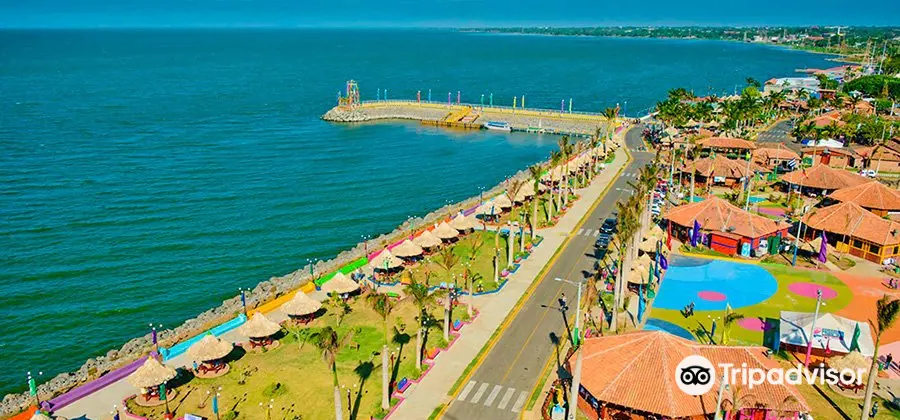
While visiting Puerto Salvador Allende, you can indulge in a variety of activities. The complex features over 50 kiosks selling everything from local cuisine to boutique crafts. The well-kept gardens are perfect for a lovely walk, and there are fountains and playgrounds for children.
One of the highlights of Puerto Salvador Allende is the boat ride on Lake Managua, which takes you around the bay and across to the Isletas de Granada. The trip takes about 40 minutes, and the views of the surrounding landscape are incredible. You can spot many species of birds and enjoy a relaxing tour.
Another attraction at Puerto Salvador Allende is the boardwalk that runs parallel to the marina. It’s an ideal spot for a romantic stroll and the perfect place to watch the sunset. The pathway is equipped with benches and plenty of street lighting, making it a safe place even during the evening.
During your visit to Puerto Salvador Allende, don’t forget to try some of the local delicacies. You can find everything from traditional Nicaraguan dishes to international cuisine. Some of the most popular dishes include Rondon, Fish Ceviche, and Churrasco.
In conclusion, if you’re planning a trip to Managua, put Puerto Salvador Allende at the top of your list. With its beautiful location on Lake Managua, endless amenities, and activities, you're sure to have a remarkable experience. Don’t forget your camera, because the views are spectacular!
12 Fun Things to Do in Hammondsport, NY
You may want to see also

Museum of the Revolution
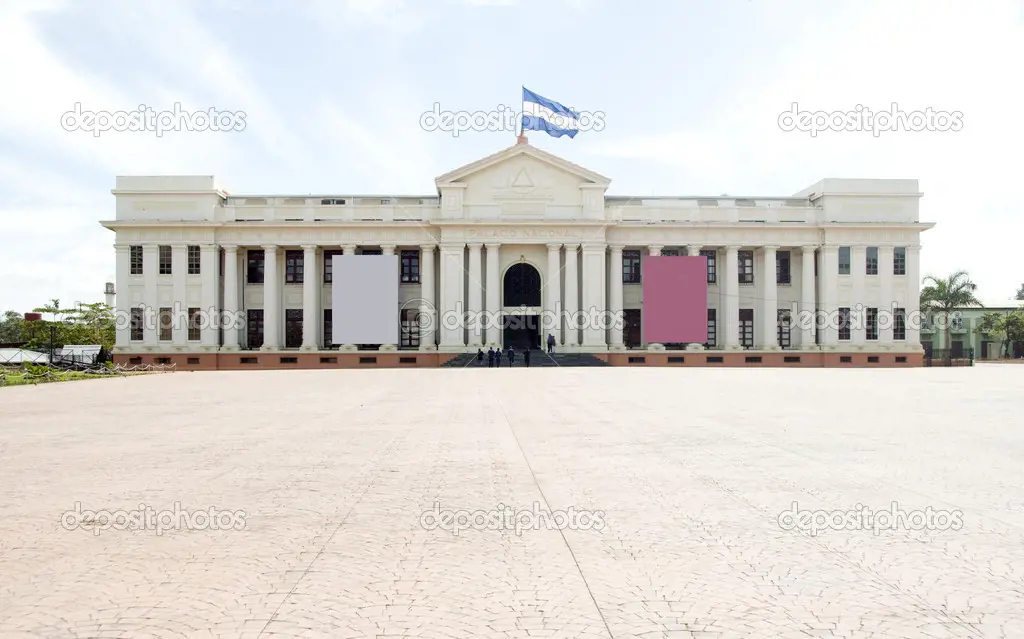
| Characteristic | Description |
|---|---|
| Name | Revolution Square |
| Type | Park in Managua, Nicaragua |
| Rating / Review count | 4.5 / 388 |
| Address | 5P4H+H43, 2 Av Suroeste, Managua 11001, Nicaragua |
| Hours | Sunday - Open 24 hours Monday - Open 24 hours Tuesday - Open 24 hours Wednesday - Open 24 hours Thursday - Open 24 hours Friday - Open 24 hours Saturday - Open 24 hours |
The Museum of the Revolution in Managua, Nicaragua is a must-visit destination for anyone interested in learning about the country's complex and tumultuous history. Nestled in the heart of the capital city, the museum chronicles the rise of the Sandinista National Liberation Front and the subsequent political turmoil that engulfed Nicaragua throughout the 1970s and 1980s.
One of the best things about the Museum of the Revolution is that it is entirely devoted to telling the story of Nicaragua's recent history. The exhibits are incredibly detailed and informative, and visitors will leave with a much deeper understanding of what life was like for Nicaraguans during the revolutionary period. From photographs and personal diaries to a replica of the guerrilla camps where the Sandinistas lived and trained, the museum has something for everyone.
When planning your visit to the Museum of the Revolution, be sure to set aside a few hours, as there is a lot of ground to cover. Visitors can expect to see exhibits dedicated to everything from the role of religion in the revolution to the ongoing struggle for social justice in Nicaragua today. One of the most moving exhibits is the "Wall of Heroes," which features dozens of photographs of people who lost their lives fighting for the Sandinista cause.
Perhaps the most powerful experience that visitors can have at the Museum of the Revolution is speaking with the guides who work tirelessly to keep the exhibits running. Many of these guides are themselves former Sandinista fighters, and they have a wealth of personal experiences to share. From tales of harrowing battles to reflections on the current political situation in Nicaragua, their stories are eye-opening and inspiring.
Of course, no visit to the Museum of the Revolution would be complete without taking some time to explore the surrounding city of Managua. From the colorful architecture of the historic district to the lush greenery of nearby nature reserves, there is so much to see and do in this vibrant and dynamic city. Make sure to try some of the local cuisine, like gallo pinto (rice and beans) and baho (a slow-cooked beef stew).
In short, if you're planning a trip to Nicaragua, be sure to add the Museum of the Revolution to your itinerary. It's an important reminder of the country's history and an opportunity to learn from those who lived through it. As one former Sandinista fighter puts it, "We must never forget the past, but we must also never give up hope for a better future."
13 Fun Things to Do in Williamsburg VA at Night
You may want to see also

Huembes Market
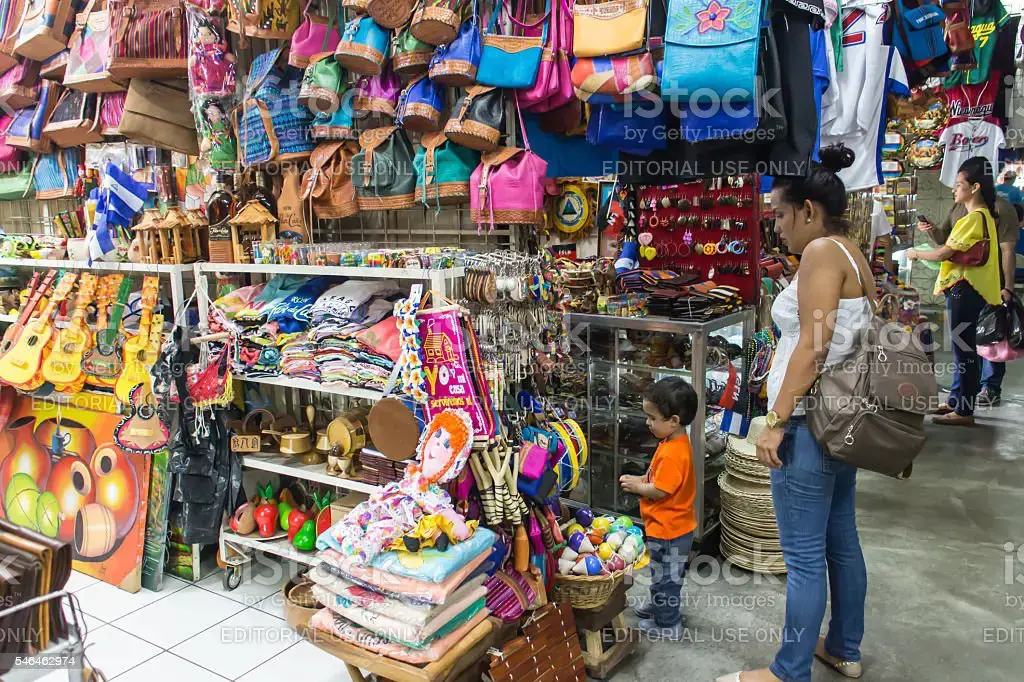
| Characteristic | Description |
|---|---|
| Name | Mercado Roberto Huembes |
| Type | Market in Managua, Nicaragua |
| Rating / Review count | 4.1 / 5,365 |
| Address | plasa ana María, Mercado Roberto Huembes, Pista de La Solidaridad, Managua, Nicaragua |
| Hours | Sunday - 7 AM–4:30 PM Monday - 8 AM–4:05 PM Tuesday - 8 AM–4:05 PM Wednesday - 8 AM–4:05 PM Thursday - 8 AM–4:05 PM Friday - 8 AM–4:05 PM Saturday - 7 AM–4:05 PM |
One of the great things about Huembes Market is its authenticity. Unlike some other markets that have been overrun by tourists and lost their original charm, Huembes retains its local feel. It's a place where people from all walks of life come to shop, haggle and socialize. Most vendors don't speak English, so it's an opportunity to practice some of the local language.
When visiting Huembes Market, it's important to keep a few things in mind. Firstly, it's best to arrive early in the morning. The market opens at 6 am and gets busy quickly, especially on weekends. By 9 am, the crowds can be overwhelming, and it can be difficult to move around. Secondly, it's essential to be aware of your belongings. Pickpocketing is not uncommon in crowded places, so keep your wallet, phone, and camera close to you.
One of the highlights of Huembes Market is the food section. Here, you can find everything from traditional Nicaraguan dishes to street food and snacks. There are small restaurants serving breakfast and lunch, as well as food vendors selling fried plantains, empanadas, and freshly squeezed juices. Grab a snack and sit down to people-watch – it's an excellent opportunity to observe the local culture.
Another fascinating aspect of Huembes Market is the artisanal crafts section. Here, you can find handmade textiles, pottery, and woodwork, among other things. The craftsmanship is impressive, and bargaining with the vendors is part of the experience. Negotiation is expected, and it's a chance to practice your bartering skills.
While visiting Huembes Market, take the opportunity to interact with the locals. Nicaraguans are friendly and welcoming, and they love to chat with visitors about their country and culture. You may even be invited to share a meal or a beer – don't hesitate to say yes!
In conclusion, Huembes Market of Managua is a must-visit for any traveler who wants to experience the local culture, sample some great food, and shop for unique souvenirs. Arrive early, be aware of your belongings, and take your time to explore the market's different sections. Talk to vendors, bargain for items, and most importantly, enjoy the lively and colorful atmosphere of this authentic Nicaraguan market. As the Nicaraguan author Sergio Ramirez said, "Huembes is not just a market, it's the heartbeat of Managua."
12 Fun Things to Do in West Haven, CT
You may want to see also

Mirador de Catarina
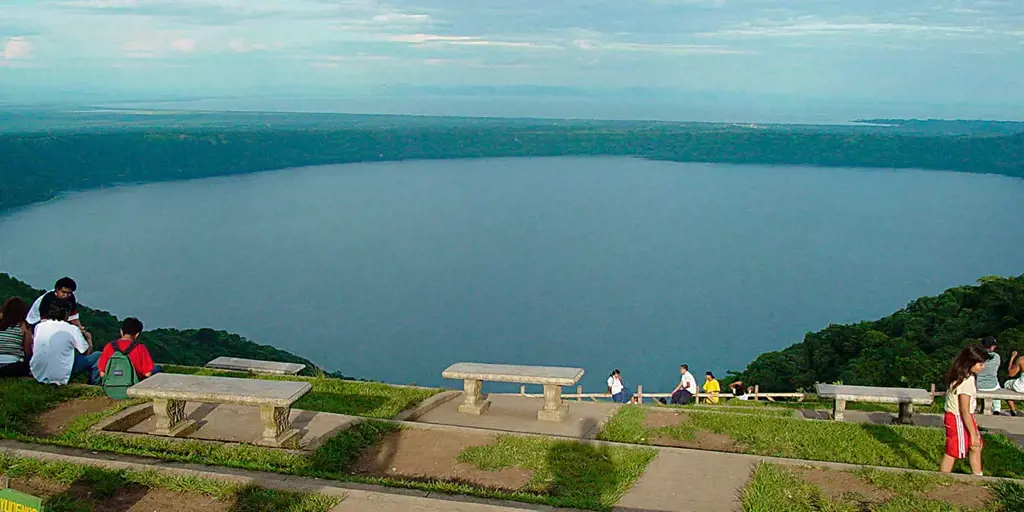
| Characteristic | Description |
|---|---|
| Name | Mirador de Catarina |
| Type | Observatory in Nicaragua |
| Rating / Review count | 4.6 / 7,318 |
| Address | WW7J+995, Catarina, Nicaragua |
| Phone | +505 2558 0302 |
| Hours | Sunday - 8 AM–10 PM Monday - 8 AM–10 PM Tuesday - 8 AM–10 PM Wednesday - 8 AM–10 PM Thursday - 8 AM–10 PM Friday - 8 AM–10 PM Saturday - 8 AM–10 PM |
My travel experience to Mirador de Catarina was simply breathtaking. The view from the top was unreal and made the steep climb up the stairs worth it. The colorful gardens on the way up are a sight to behold and truly add to the overall experience. I recommend bringing a camera to capture the scenery and memories of your visit.
To make the most of your visit, I recommend arriving early in the morning, as it can get quite crowded during peak hours. As for attire, wear comfortable shoes and clothes as the stairs can be slippery, especially during the rainy season. Remember to stay hydrated and bring sunscreen, as it can get quite hot.
Besides the amazing view, there are several things to do at Mirador de Catarina. Take a stroll through the colorful gardens, or buy some handmade souvenirs from the local vendors, who are very talented and friendly. You can also hire a guide for a more in-depth tour of the area.
When visiting Mirador de Catarina, be sure to explore the small town of Catarina, which is known for its lush nurseries and garden centers. The town also has several restaurants that serve traditional Nicaraguan dishes. One of my personal favorites is "gallo pinto," a rice and bean dish that's popular throughout Central America.
If you're into storytelling, the guides at Mirador de Catarina have plenty of anecdotes and stories about the history and folklore of the area that are fascinating to hear. One interesting fact is that in pre-Columbian times, the area was a sacred place for the indigenous tribes of Nicaragua.
In the words of Henry Ward Beecher, "Every artist dips his brush in his own soul, and paints his own nature into his pictures." That certainly rings true for the artisans who sell their handmade crafts at Mirador de Catarina. One of my favorite quotations from a local artist was, "My art is a reflection of the beauty that surrounds us. It's important to me to share that beauty with others."
In conclusion, the Mirador de Catarina of Managua is truly a gem worth visiting. The viewpoint provides an unforgettable experience, the town of Catarina is full of charm, and the local artisans are talented beyond measure. So why not make the journey to Mirador de Catarina and create some unforgettable memories of your own?
12 Fun and Romantic Things to Do in Louisiana for Couples
You may want to see also

Mercado Oriental
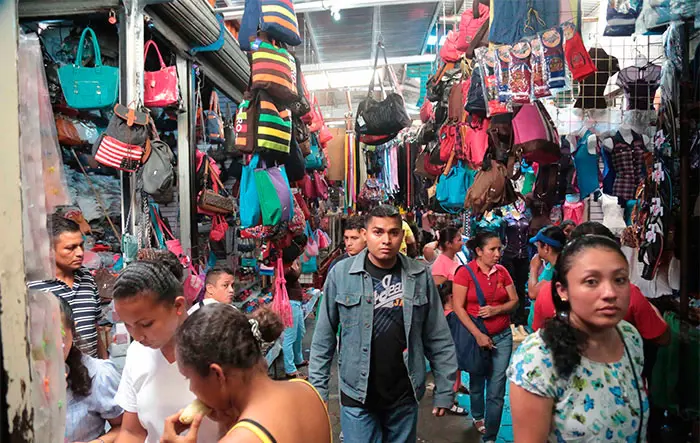
| Characteristic | Description |
|---|---|
| Name | Mercado Oriental |
| Type | Market |
| Website | Go to website |
| Rating / Review count | 3.9 / 326 |
| Address | Managua, Nicaragua |
| Phone | +505 8888 2014 |
| Hours | Sunday - 6 AM–4 PM Monday - 6 AM–5 PM Tuesday - 6 AM–5 PM Wednesday - 6 AM–5 PM Thursday - 6 AM–5 PM Friday - 6 AM–5 PM Saturday - 6 AM–5 PM |
My first visit to Mercado Oriental was overwhelming. The sheer size of the market was daunting, and I quickly found myself lost amidst the throngs of vendors and shoppers. But as I began to explore, I discovered the market's charms. The vendors were friendly and welcoming, eager to share their wares with anyone willing to browse.
One of the best things about the market is its authenticity. There are no chain stores or tourist traps here, only local vendors selling goods that are unique to Nicaragua. The market offers a glimpse into the everyday lives of the people who live in Managua, and it is an experience not to be missed.
One of my favorite things to do at the market is to sample the street food. From steaming bowls of sopa de res to crispy fried plantains, the food at Mercado Oriental is delicious and affordable. Be prepared to use your Spanish language skills though, as many vendors do not speak English.
The market can be overwhelming, so it’s best to go with a plan. Consider hiring a guide who can help you navigate the maze-like streets and take you to the best vendors. It’s also a good idea to wear comfortable shoes and clothing, as the market can get quite hot and crowded.
As I wandered through the market, I encountered some truly unique finds. Nicaraguan handicrafts such as woven baskets, pottery, and woodcarvings make great souvenirs, and the clothing vendors have a great selection of traditional dresses and shirts. Just be prepared to haggle for the best price!
While Mercado Oriental can be chaotic, the vendors are generally friendly and helpful. They are not pushy, and I never felt threatened or intimidated. It’s important to keep an eye on your valuables, though, as pickpockets are a possibility.
In conclusion, the Mercado Oriental of Managua is not to be missed for visitors to Nicaragua. It’s a unique experience full of culture, flavor, and authentic Nicaraguan goods. Go with a plan, and be open to exploring the market's myriad sights, sounds, and smells. Happy shopping!
14 Fun Things to Do in Valencia, California
You may want to see also

Centro Cultural Nicaraguense Norteamericano

| Characteristic | Description |
|---|---|
| Name | Centro Cultural Nicaragüense Norteamericano - CCNN |
| Type | English language school in Managua, Nicaragua |
| Website | Go to website |
| Rating / Review count | 4.5 / 211 |
| Address | Nuevo Estadio Nacional de Béisbol Dennis Martínez, 20 Calle Suroeste, Avenida Universitaria Casimiro Sotelo, 100mts al oeste, Managua 11123, Nicaragua |
| Phone | +505 2278 1288 |
| Hours | Sunday - 8 AM–12 PM Monday - 8 AM–5 PM Tuesday - 8 AM–5 PM Wednesday - 8 AM–5 PM Thursday - 8 AM–5 PM Friday - 8 AM–5 PM Saturday - 8 AM–2 PM |
| Profiles |     |
The Centro Cultural Nicaraguense Norteamericano (CCNN) is a fantastic cultural center located in the heart of Managua. As a language assistant, I was lucky enough to have the opportunity to spend many afternoons there learning about Nicaraguan culture and practicing my Spanish. If you are planning a trip to Managua, I highly recommend stopping by the CCNN to soak up some of the city's vibrant culture.
The CCNN hosts a variety of events and activities ranging from art exhibits to cooking classes. One of my favorite activities was the weekly conversation club, which brought together Nicaraguans and English speakers for informal language practice. It was a great opportunity to meet locals and learn more about Nicaraguan life.
If you're interested in Nicaraguan art, the CCNN frequently hosts exhibits featuring both established and up-and-coming artists. An added bonus is that many of the exhibits are free and open to the public. I was blown away by some of the beautiful paintings and sculptures that I saw during my time there.
In addition to language practice and art exhibits, the CCNN also offers a variety of classes and workshops. These range from traditional Nicaraguan dance to cooking classes where you can learn to make authentic dishes like gallo pinto and vigorón. These classes are a great way to immerse yourself in Nicaraguan culture and learn new skills.
One of my favorite things about the CCNN is the sense of community that it fosters. It's a great place to meet locals and make new friends, and there's always something going on. Whether you're interested in art, language, or just want to meet people, the CCNN is a wonderful place to spend an afternoon.
If you're planning a visit to Managua, the CCNN should definitely be on your list of places to visit. It's easy to get to and located in a safe part of the city. Make sure to check their website or Facebook page for the latest events and activities. And if you're feeling brave, try striking up a conversation with a local – you might be surprised what you learn!
In conclusion, cultural centers like the Centro Cultural Nicaraguense Norteamericano are an excellent way to learn more about a country's culture and connect with locals. Whether you're interested in language practice, art, or cooking classes, the CCNN has something for everyone. So if you're planning a trip to Managua, make sure to stop by and soak up some of the city's vibrant culture.
12 Best Activities to Enjoy in Grayton Beach
You may want to see also

Flor de Caña Rum Factory
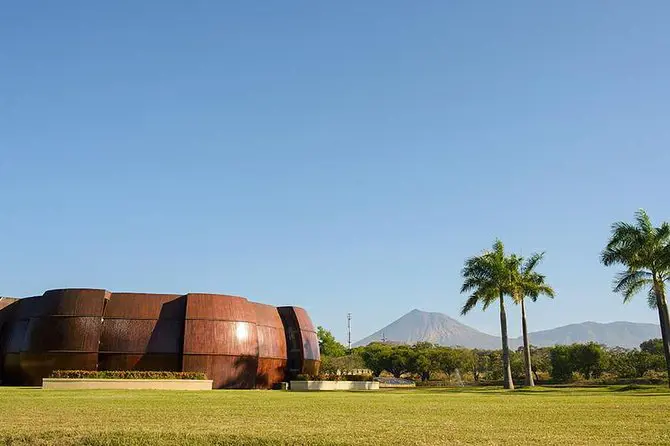
Nestled at the foot of the San Cristobal volcano lies Nicaragua's most renowned rum-making facility. Flor de Caña is a five-generation family-owned business that has been producing exceptional rum since 1890. Rum enthusiasts from all over the world visit the factory, located just outside of Managua, to witness the fascinating process of traditional rum-making.
Visitors to the Flor de Caña factory can enjoy a range of activities. The interactive museum is among the most popular. Here, you can learn about the history of rum-making in Nicaragua and trace the evolution of this esteemed family business. The museum visit concludes with a generous tasting of the different Flor de Caña rums, which are sure to delight the palate.
The factory tour is another must-see attraction for visitors. Here, you can witness the full process of rum production, from milling and fermentation to distillation and aging. You'll see the massive vats of molasses, barrels of aged rum, and state-of-the-art machinery that allow the factory to produce some of the best rums in the world.
One of the most striking features of the Flor de Cana factory is its commitment to sustainable practices. Flor de Caña regards itself as a green-energy producer, making use of renewable energy sources such as biomass, hydro, and wind power. Visitors are invited to learn about these practices, as well as local wildlife conservation initiatives, which have been undertaken in partnership with the World Wildlife Fund.
In addition to the tour and the museum visit, travelers can dine at the La Casa del Ron restaurant, which serves an exquisite selection of local dishes and delicious cocktails. The restaurant is stylishly decorated, with a modern design that is both elegant and relaxed.
The experience at the Flor de Caña factory and the surrounding area is a testament to the dedication and passion of the family behind the brand. Visiting the factory is a journey through the history and tradition of rum-making in Nicaragua, a unique taste of local culture, and an unforgettable travel experience.
So, why not plan a visit to Flor de Caña in Nicaragua? The factory is open to visitors all year round. The best time to visit is during the dry season, which runs from November to May. Visitors can purchase tickets on-site, and private tours can be arranged for groups. Flying into the Managua international airport is the best way to reach the factory; from there, the factory is a short drive away.
Whether you're a rum enthusiast, a history buff, or just looking for an unforgettable travel experience, the Flor de Caña factory in Nicaragua offers something for everyone. As the owner of Flor de Caña, Carlos Pellas, once said, "We create rums that embody our passions, of family, legacy, and quality. It is our privilege to share them with the world and the people we love."
13 Fun Things to Do in Yuma, Arizona
You may want to see also

Laguna de Apoyo Natural Reserve
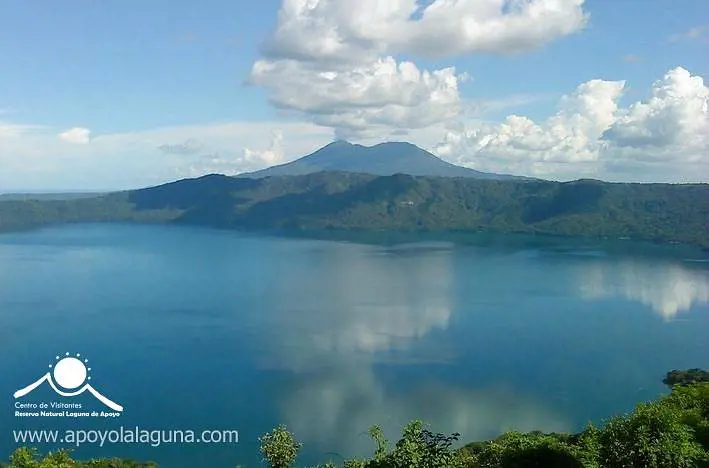
Located just 25 kilometers southeast of Managua and tucked away in a gigantic volcanic crater, Laguna de Apoyo Natural Reserve is an astonishing sight to behold. The lake is one of the popular tourist spot in Nicaragua where locals and foreigners alike go to enjoy a serene and relaxing ambiance.
A trip to Laguna de Apoyo Natural Reserve is a perfect getaway for nature lovers as its crystal-clear water reflects the beauty of the surrounding greenery that envelopes the crater. The lake offers a variety of activities like kayaking, swimming, and stand up paddle boarding. On arrival, it might be tempting to just sprawl out on the beach and soak up the sun, but visitors should take a short hike around the lake to enjoy the stunning scenery from a different perspective.
The water temperature in the Laguna de Apoyo is warm enough to swim in without feeling cold, making it a perfect place to relax and unwind. Visitors can take advantage of the various resorts around the lake to rent gear for activities or join guided tour groups to visit the places they’re interested in. If swimming is not your thing, there are several lookout points around the lake which offer a bird’s eye view of the sunken crater which also serves as great locations for taking stunning photographs.
One of the most attractive aspects of Laguna de Apoyo Natural Reserve is the wildlife. While kayaking or swimming, keep an eye out for howler monkeys that can be spotted on the surrounding cliffs. The lake is home to a large variety of over 500 species of animals from fish, birds, turtles, bats and reptiles, some of which can only be found in Nicaragua. Visitors are advised not to feed the creatures but to respect their space and observe them peacefully. Nicaragua is not just about partying in the cities, the natural beauties of this country are considerably vast, and Laguna de Apoyo proves so.
It is interesting to note that the lake's crystal-clear water was formed as a result of the eruption of the Apoyo volcano more than 20,000 years ago. Today, the Laguna de Apoyo has become a popular destination for either adventure seekers, honeymooners or travellers who enjoy nature’s splendour. Visitors should be prepared with sunscreen, comfy clothes, plenty of water, and a beach towel. A camera to capture the stunning surroundings is highly recommended; making memories with that special person in a place as beautiful as this is a must.
In conclusion, Laguna de Apoyo Natural Reserve is a great way to get out of the city and indulge in Nicaragua’s beautiful landscape. The lake’s crystal-clear water and the surrounding greenery provide a serene ambiance that will make anyone’s excursion to the reserve a memorable one. As we gradually make our way back to normalcy with a pandemic slowly subsiding, visiting soon is highly recommendable. The trip is only a short distance away from Managua, thus making it an easy day trip, weekend getaway or a perfect destination for a vacation.
12 Free Things to Do in Tallahassee
You may want to see also
Frequently asked questions
Some popular tourist attractions in Managua include the National Palace, the Ruben Dario National Theater, and the Cathedral of Managua.
Tourists can visit the Museum of the Revolution, the Mercado Roberto Huembes, and the Masaya Market to experience local culture and arts.
Some of the best places to eat in Managua include El Eskimo, La Marseillaise Restaurant, and La Taberna Chela.
Tourists can visit Tiscapa Lagoon Natural Reserve to enjoy nature and panoramic views or take a boat ride on Lake Managua.
While Managua has experienced issues with crime in the past, it is generally considered safe for tourists who take necessary precautions such as avoiding certain areas at night and keeping an eye on personal belongings while in public.


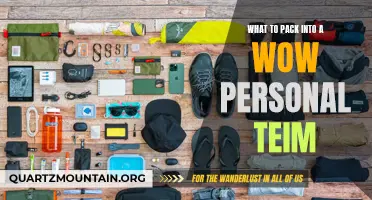

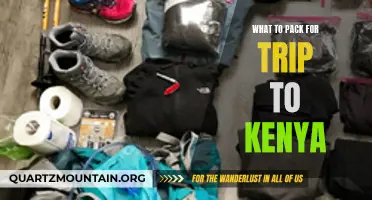
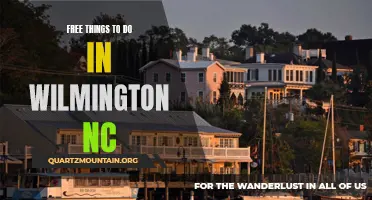
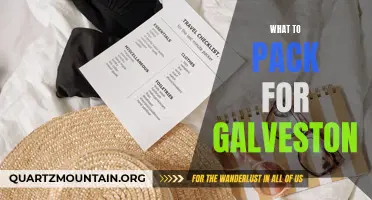

6 Comments
Dulcie Sweeney
Cagri Burak
AuthorElliot Frost
Matteo Giordani
AuthorMax Branch
Kamilla Henke
Author